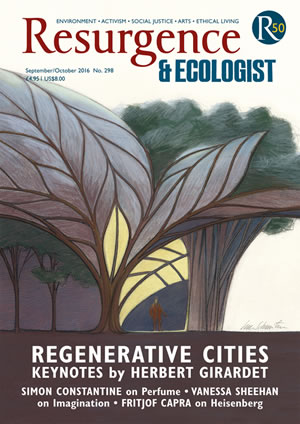The ash tree is enjoying a literary moment, partly because of mounting threats to its existence from pests and disease. Yet Oliver Rackham’s The Ash Tree is the last book from another forest giant, the eminent ecological historian himself, who died aged 75 in February last year.
Professor Rackham’s many contributions scatter like ash keys along the winding path of his career. They range from forensic studies of local woodlands such as Hayley Wood and Hatfield Forest to broad, magisterial works on the ancient English woodland and the history of its countryside. He travelled as far afield as the Mediterranean to combine ecology with archaeology.
His final work, first published in 2014 and now republished in paperback, is a characteristic blend of discursive botanical and historical scholarship with a sharply contemporary message. He argues that the biggest threat to the world’s arboreal inhabitants is globalisation; indiscriminate planting and cross-border tree trade, he is convinced, are downright dangerous.
The book belies its seeming brevity in both depth and range. Rackham canters easily through the botanical profile; the ash in history and prehistory; examples of veteran, ancient and exceptional trees; its place in culture, spiritual life and material use. He covers in less than 15 pages the material dealt with at length in Robert Penn’s fine work The Man Who Made Things out of Trees (reviewed in Resurgence & Ecologist Issue 296: Going with the Grain).
His touch is so light that what appears a charming eccentricity – an observation that elephants at Whipsnade would not eat ash, whereas they happily munched on other species – sets the scene for later speculation on the habits of mammoths in interglacial periods. Were animals like the fossilised West Runton Elephant – “creatures of Tolkienesque size and majesty” – capable of breaking down the ash, like living bulldozers, or was the tree in some way a favourite of Mesolithic humanity?
Rackham’s real purpose was to respond to the eruption of concern in 2012 over the future of the ash. Apart from the usual suspects – caterpillars, canker, gall and rust – the culprit under his microscope is ash disease, or ash dieback. Here his scientific precision is on full display as he delves into the complex life-cycle of the fungus Chalara fraxinea and its links to a small, two-cup fungus that appears in two visually identical but genetically distinct forms, one of which produces toxic viridiol.
It’s an object lesson in the intricacies of a developing field, and Rackham is frank on where knowledge is incomplete. Does ash disease always, or even usually, kill the tree? Not necessarily, to judge by evidence from the Czech Republic, Finland and the Baltic. Is it an East Asian import, or a new genetic mutation? Was it spread from tree nurseries, or did it arrive as wind-blown spores? And what of the emerald ash borer, a small beetle that is decimating the American ash population?
Rackham does not offer a prediction. He notes that people have moved plants around the world for centuries, and he provides a table of plant disease outbreaks since before 1800. Globalisation of plant disease has gone into overdrive, driven by ever-growing volumes of trade. He offers a seven-point programme, not only for ash, but also to forestall diseases that have not yet arrived or are as yet unknown. Climate change and the anthropology of commerce must be no excuse.
With his shock of white hair, cockeyed spectacles, battered outdoorsman’s hats, and projecting clump of snowy beard, Rackham looked every inch the independent woodland sage, with prominent academic posts to his name. If the brain’s natural pattern is dendritic, Rackham’s was more so than most. His deep learning, clarity of expression, and deft fluency are sorely missed.
Hugo Davenport is a freelance journalist.






